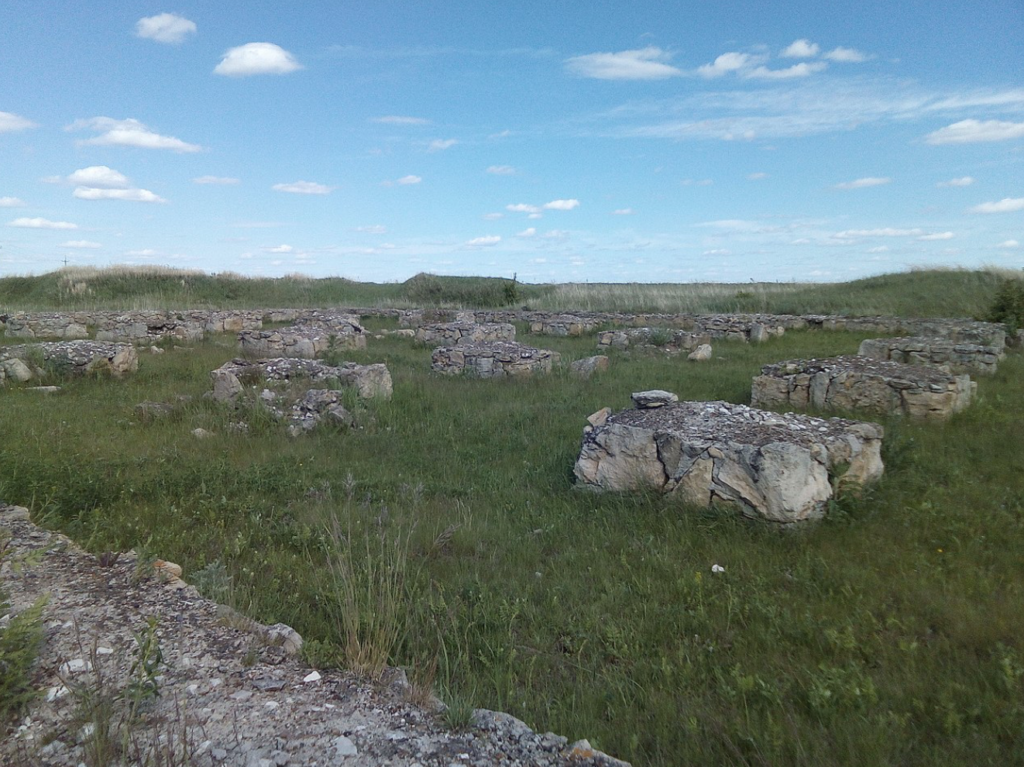Muslim architecture of Volga Bulgaria
September 11th



In the last century, the ruined residues of buildings from the X to the beginning of the XIII century were discovered and examined at the Bulgar, Bilyar, Yelabuga, Suvar, Hulash, Krasnosyundyukovskoye ancient settlements, and Murom town. The residues of the monumental buildings of the cities of Bilyar and Suvar were most fully examined. Over the past decades, the residues of brick-stone and wooden buildings of various types have been identified and examined, which indicate that by the tenth century, a sufficiently developed building culture had formed in the region.
With the appearance of cities, the construction of public buildings began in the region: cathedral and parish mosques, minarets, baths, etc. The first cathedral mosque of the region was also wooden, built in Bilyar in 922, following the example of Arab multi-column mosques. The Mihrab and the longitudinal axis of the mosque are oriented along an azimuth of 25–115 degrees towards Mecca. In the middle of the tenth century, a stone multi-column mosque was attached to the wooden mosque, with a separate minaret standing 1.5 m from its north-western wall or adjacent to it through the passage. After the construction of the stone part of the mosque, the wooden part was reconstructed with an increase in the bays between the wooden pillars. Researchers suggest the presence of entrance halls and insulated from the cold pitched roofs in the Bilyar Cathedral Mosque.
It is important that a monumental stone Muslim religious building with a tower-like minaret was built for the first time in the Volga Kama region. According to eyewitnesses, it had a cuboid base and a tapering cylindrical trunk. During the construction of this mosque, Bulgarian craftsmen mastered the construction techniques for the erection of brick and stone structures. They used white limestone stone for the walls and burned brick in structurally significant places: arches and domes. The stone mosque is the earliest stone structure in the region, reliably known from archaeological excavations. If in the wooden mosque they used the architectural and spatial structure of the eastern multi-column mosque embodied in local wooden constructions, then in the second building, the forms and constructive techniques of Middle Eastern and Central Asian stone structures were obviously used. The possibility of utilizing objects from the Central Asian monumental architecture of that period as analogs to the Bilyar Cathedral Mosque can be derived from the fact that Central Asian Islam was spread in Bulgaria, and since the official adoption of Islam, close religious and commercial ties with the countries of Central Asia have been maintained.
We can only judge the appearance of the mosque, presumably. Architectural historians present their reconstructions of the appearance of the Bilyar Cathedral Mosque. There could be several cathedral mosques in the large city. The residues of the main city mosque on the market square of the ancient Bilyar settlement mentioned by Arab travelers were observed by V. A. Kazarinov in the nineteenth century. . He saw the residues of cylindrical columns with 2 arshines (more than 140 cm) in girth. That means there was also a monumental building of the main city cathedral mosque in the central market in the capital of Bulgaria, in addition to the cathedral mosque discussed above, which was located in the citadel, the administrative center. When this mosque was built and what it was, it is not precisely established since archaeological excavations were not carried out on its site. Even though archaeologists have identified the residues only of the cathedral palace mosque, undoubtedly there were mosques of the parish type. Mosques were built in markets, cemeteries (memorial mosques), caravansaries, residential quarters, and settlements. They could be built of wood, stone, or brick. However, to date, parish mosques have not yet been identified because the vast territories of Bulgarian cities have only been partially excavated.
REFERENCE TO THE SOURCE: https://bulgar.pnzgu.ru/culture/architecture


